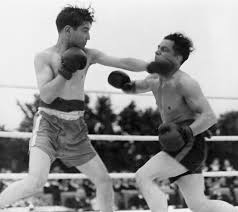The 10 Most Common Boxing Injuries
 Boxing may be a popular sport, but one must not forget that this still a very aggressive and high impact combative contest. Such intense activities will always come with injuries, hence why you have to base your training on ways to avoid any damaging mishaps. Here are the 10 most common boxing injuries to watch out for.
Boxing may be a popular sport, but one must not forget that this still a very aggressive and high impact combative contest. Such intense activities will always come with injuries, hence why you have to base your training on ways to avoid any damaging mishaps. Here are the 10 most common boxing injuries to watch out for.
1. Boxer’s Fracture
The aptly named boxer’s fracture is when the small bones under your ring and pinkie finger break. Said injury is followed by a sharp pain, swelling, and an inability to move your fingers. If your bones are still aligned, then your chances of a full recovery are promising, but any misalignment may require surgery. Avoid this problem by practicing the correct punching technique and ensure your diet is rich in calcium.
2. Carpal Bossing
Common between the ages of 20 and 40, carpal bossing is when the bones in the back of your palm overgrow and cause uncomfortable lumps to surface. Annoyingly, there is not much you can do once this occurs but you can prevent it by using the correct gloves and making use of hand wraps. If the pain becomes unbearable, wear a wrist guard after hours, take anti-inflammatory medication, and speak to your doctor about steroid injections. Thankfully, most people heal quite quickly from carpal bossing, but it will temporarily hinder your training.
3. Arthritis
With is so much repetitive stress focused on one place, the cartridge and joints in a boxer’s hands may deteriorate and swell. This is a progressive condition otherwise known as arthritis and has even forced professional boxers into an early retirement, as was the case for world heavyweight champion James J. Braddock (1935 to 1937). As before, take care of your hands, while exercising additional caution if your routine includes a lot of bag work.
4. Tennis Elbow
Despite the name, tennis elbow can stem from various different activities. Due to the snapping motion of a boxer’s arm extensions, this painful tendon inflammation is common, especially if you’ve increased your workout intensity recently. Try applying cold therapy to the area and wear a compression sleeve. To prevent tennis elbow, focus on your technique rather than your striking power and tape up your hands to absorb some of the shock.
5. Concussion
Brain trauma is one of biggest dangers that boxers face, and can even prove fatal like during the 1947 fight between Sugar Ray Robinson and Jimmy Doyle, where Doyle was knocked out and died from his injuries a few hours later. If a blow to the head causes any nausea, confusion, short-term memory loss, or unconsciousness, you need to speak to a doctor immediately. Headgear can soften the knocks, but remember that the more concussions you have, the more threatening they become.
6. Shoulder Dislocation
If your shoulder looks strange and you can’t move your upper arm, then it may have popped out of your shoulder blade. Never try to fix this problem yourself, as certain dislocations require immediate medical attention. The recovery process takes around three long weeks of downtime, so always stretch before training, keep your arms close to the body, and don’t exaggerating your swings too much.
7. Cuts and Lacerations
If you’re willing to step into the ring, then you have to accept that a certain amount of damage is unavoidable. The friction between a glove and your skin will cause minor scratches and bruising, but this can be reduced by using protective headgear and oiling up your face. When these inevitable injuries do take place, clean up the wound and evaluate whether you require stitches or not. You may also need to work on your defense game if this is a frequent type of incident.
8. Spinal Injuries
Spinal trauma is uncommon in the boxing world, but there are still some risks for those who are new to the sport or are pushing themselves too hard. Considering how your frame turns while you frantically dodge fists coming at your face, it’s important for boxers to focus on their core training which will reduce the chance of any undesirable back mishaps.
9. Leg Injuries
Boxing is a relatively forgiving sport on the legs, but just one bad twist can result in an ankle sprain or knee injuries. Your safest bet is to learn how to pack a strong punch without placing too much stress on your lower body while practicing the art of falling with minimal impact.
10. Kidney Damage
Thankfully, all levels of boxing have banned kidney shots, as one bad contact can cause anemia, kidney failure, and even death. Due to the legality, this type of incident is no longer a common concern, but it’s still worth inquiring whether your sparring partner is aware of this rule.
The sport is always welcome and great for the culture of any country because it helps in the education and development of people. However every sport unfortunately has risks of hurting in direct confrontation as quoted in the article. I liked the post:)
I would bet tennis elbow is actually THE most common boxing injury, but you don't hear about it that much because it's really not very serious. I think almost everyone who takes up boxing gets tennis elbow at least once.